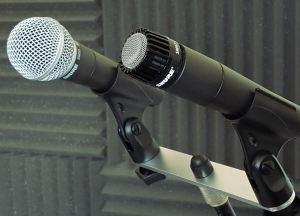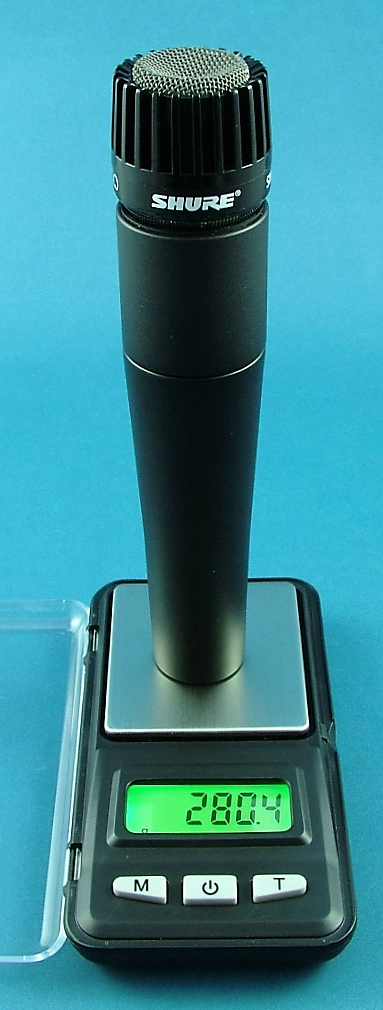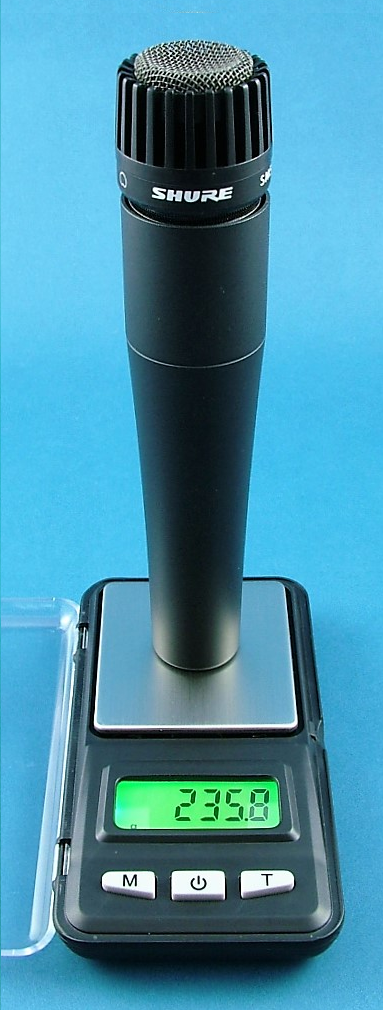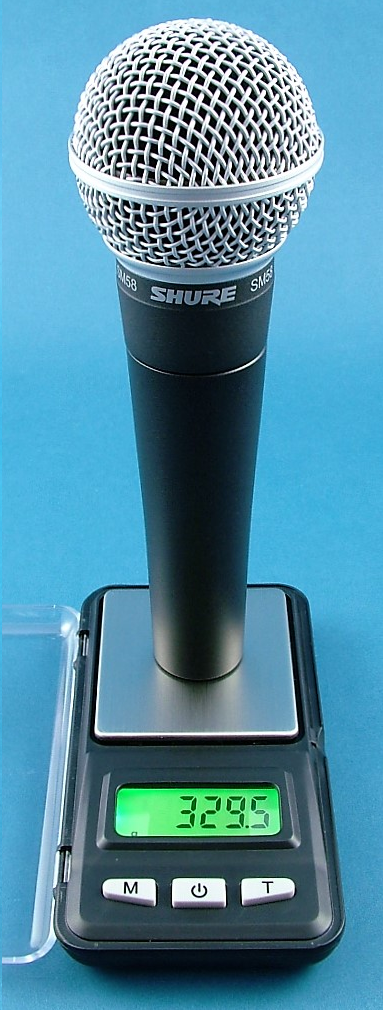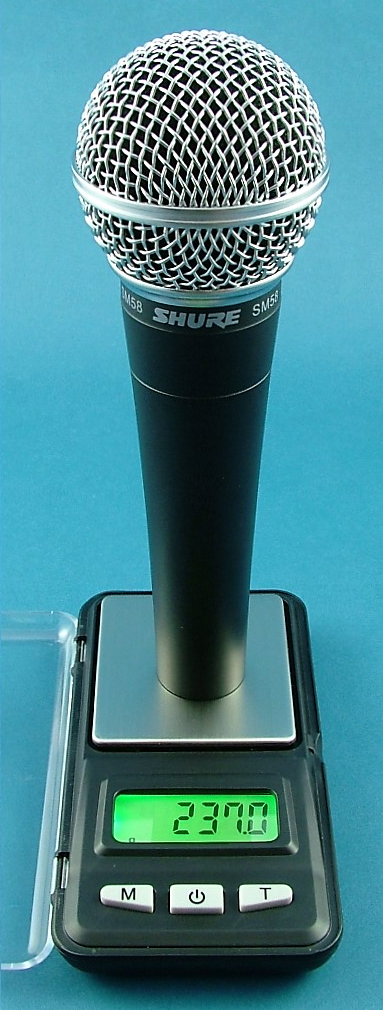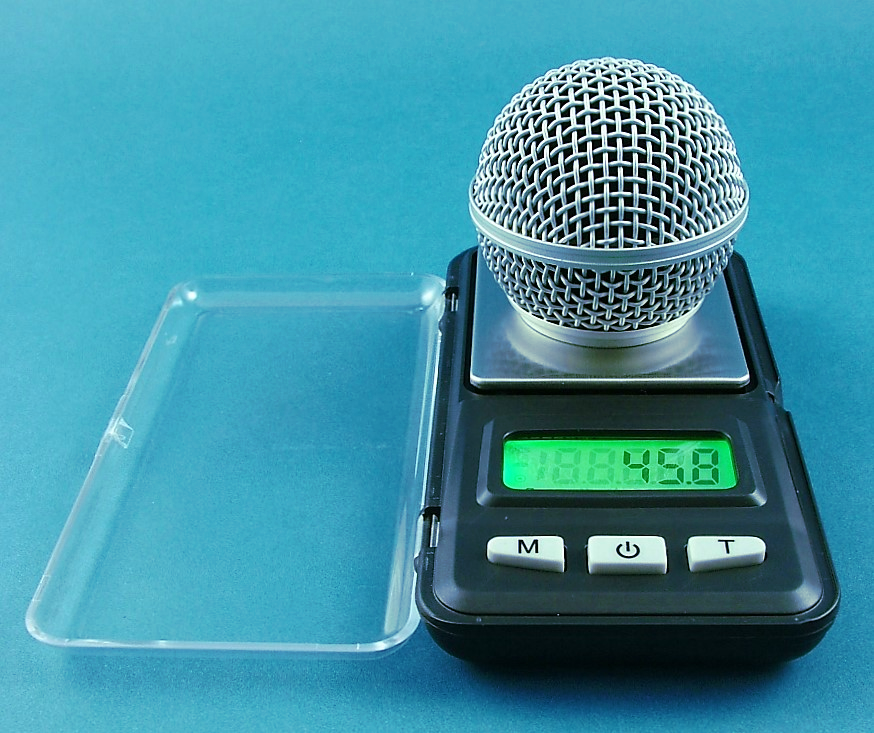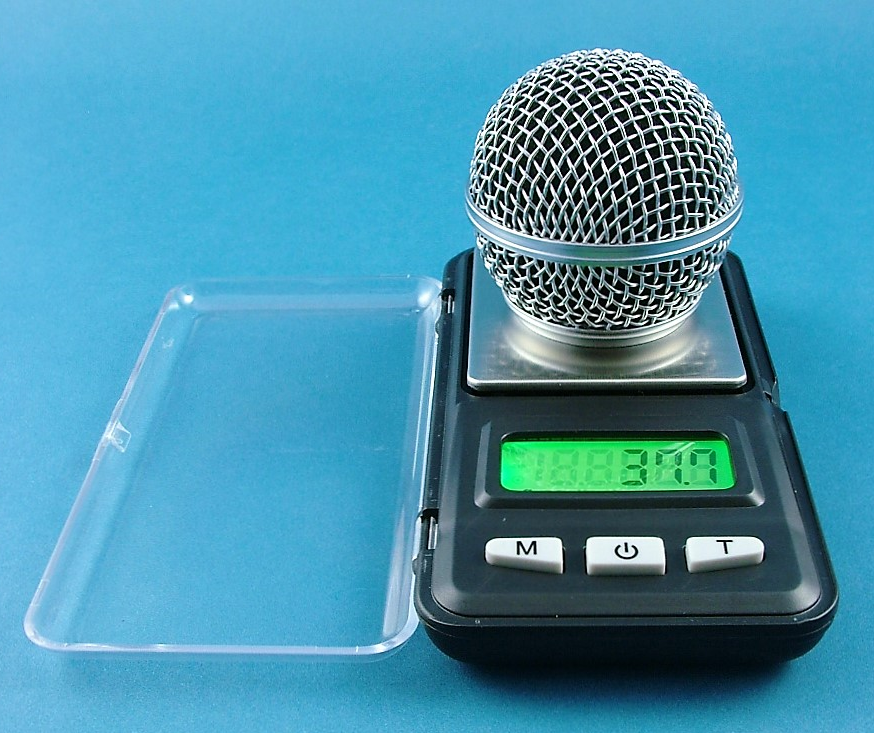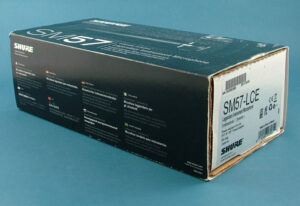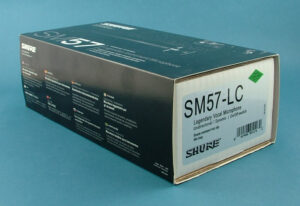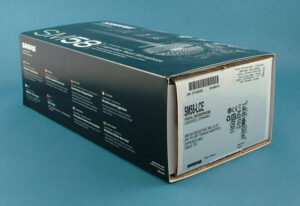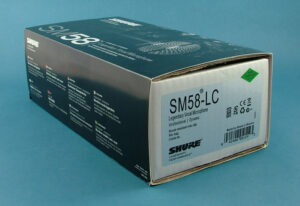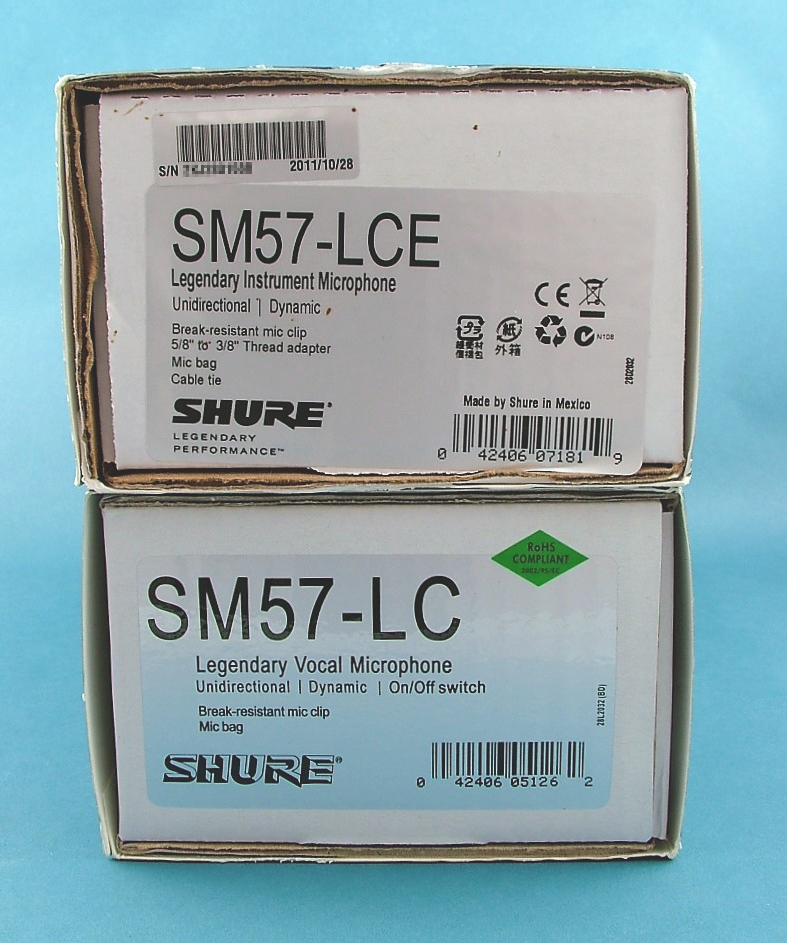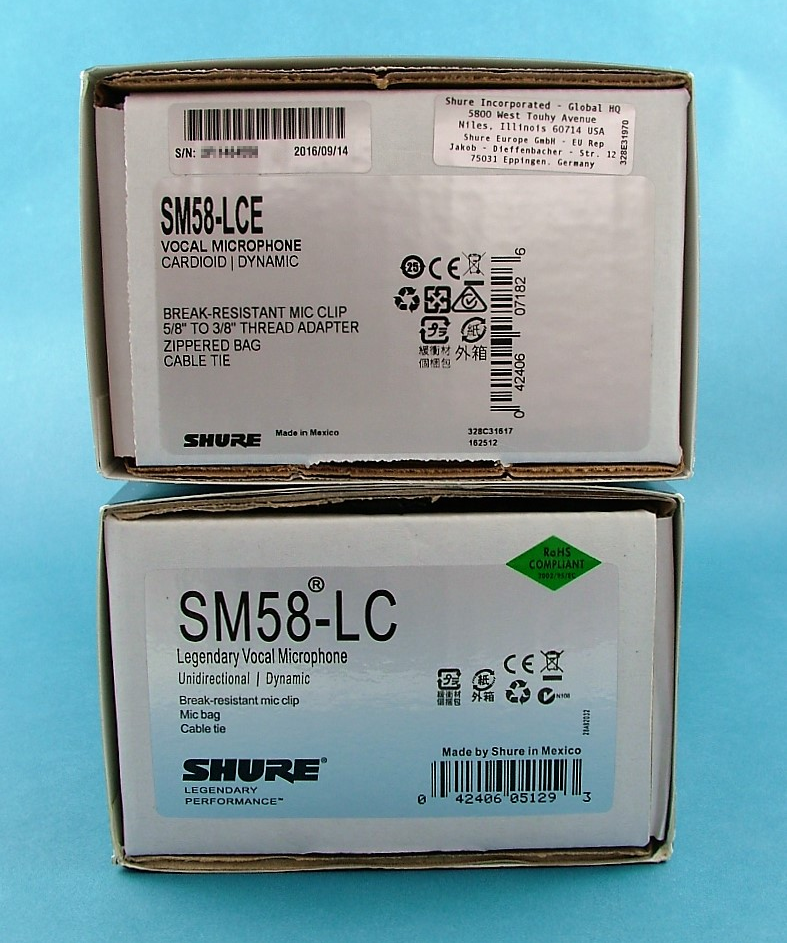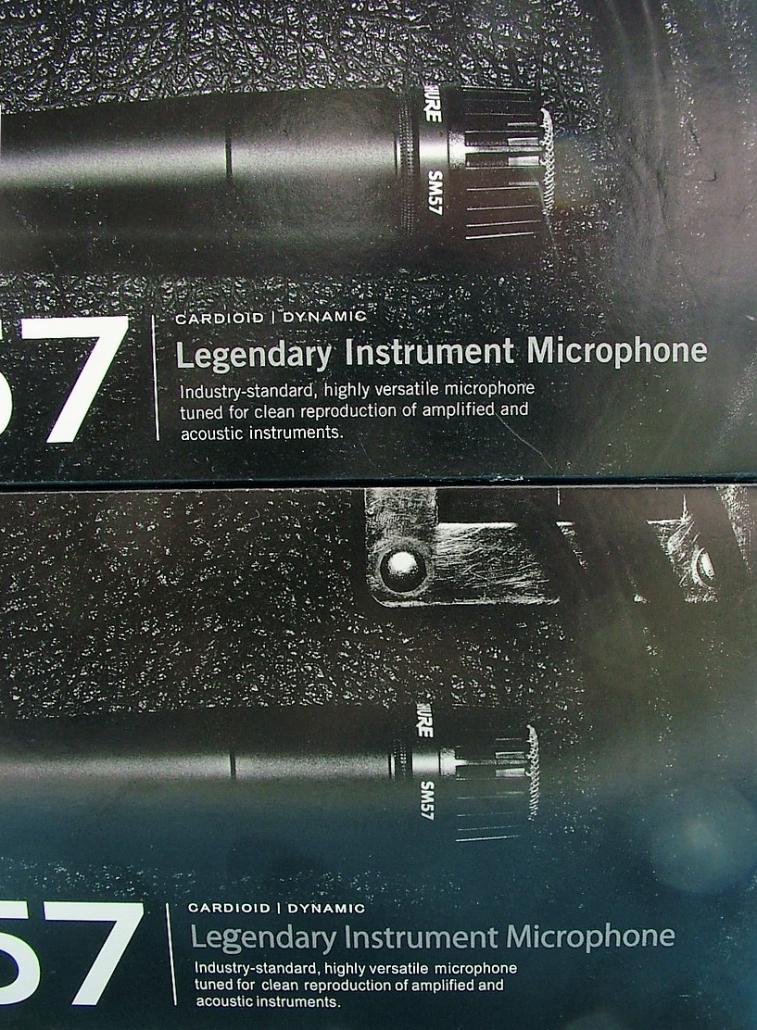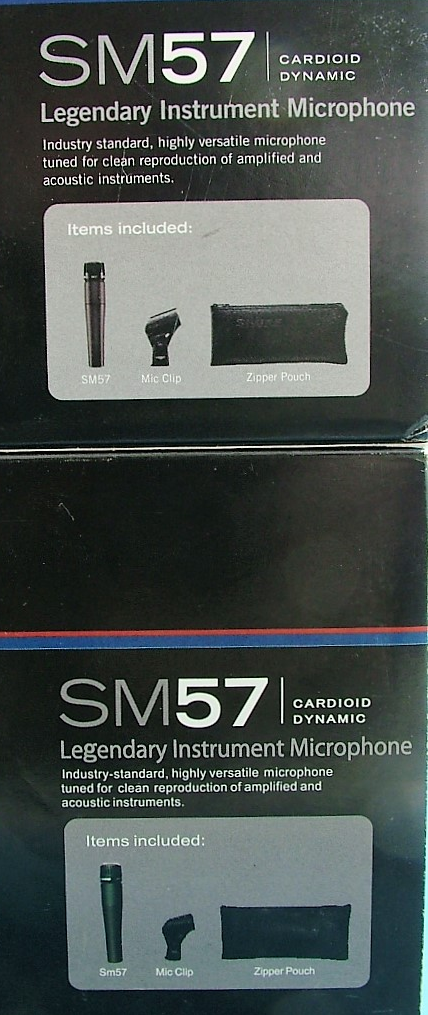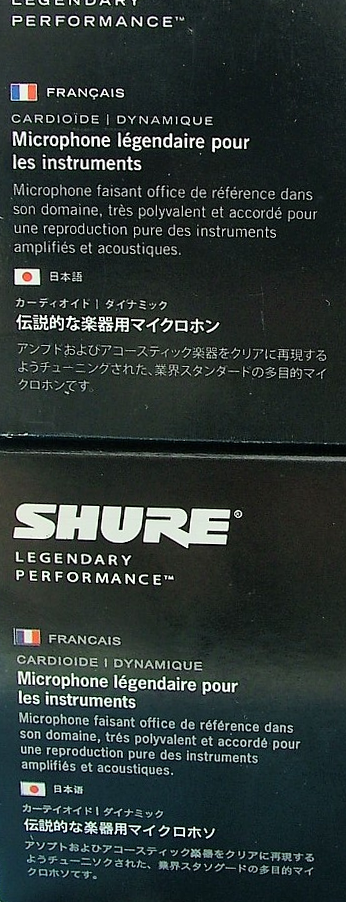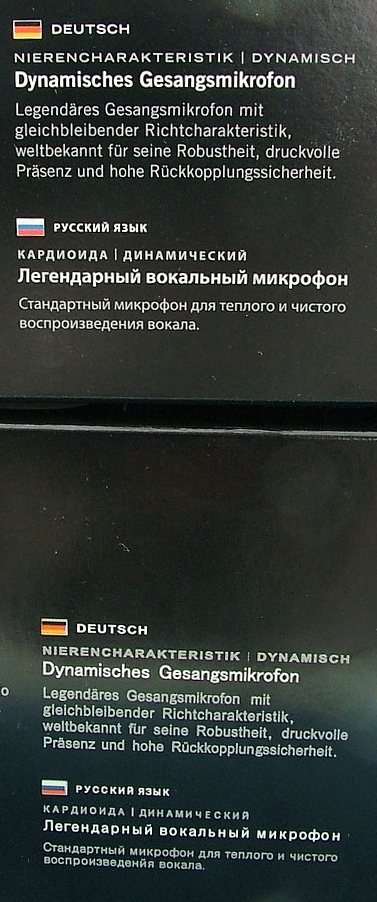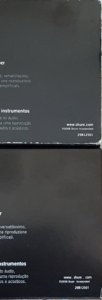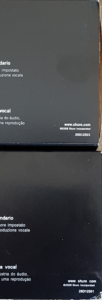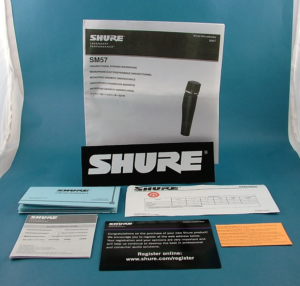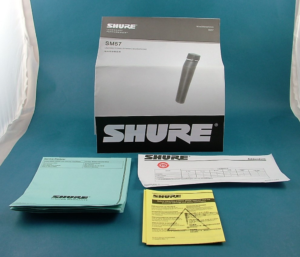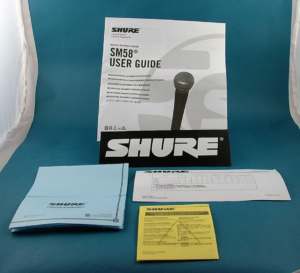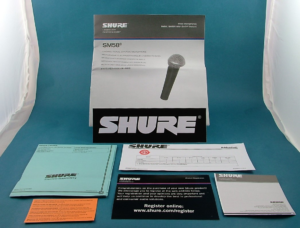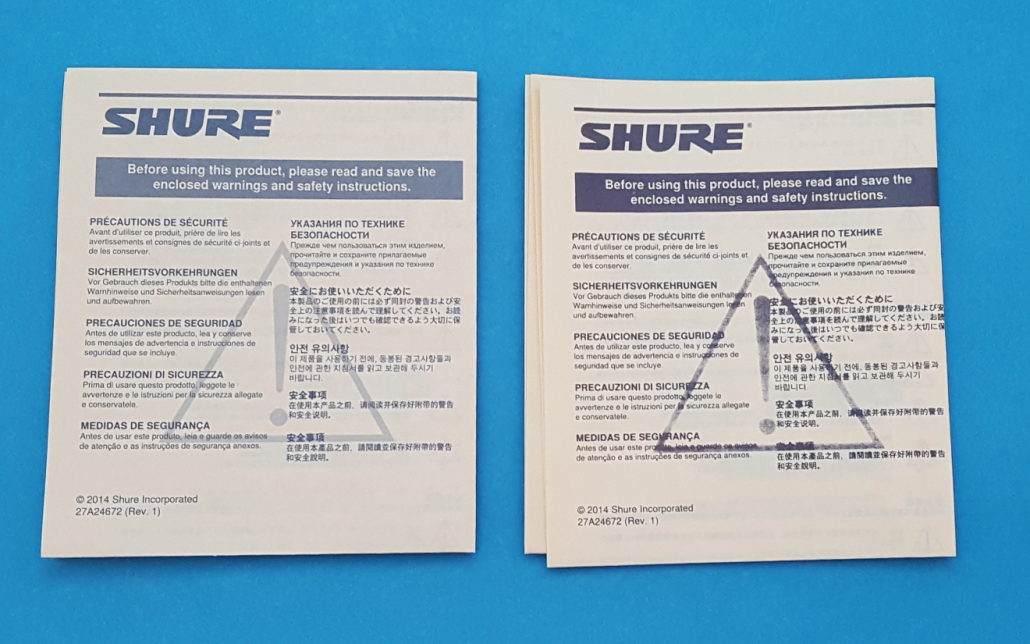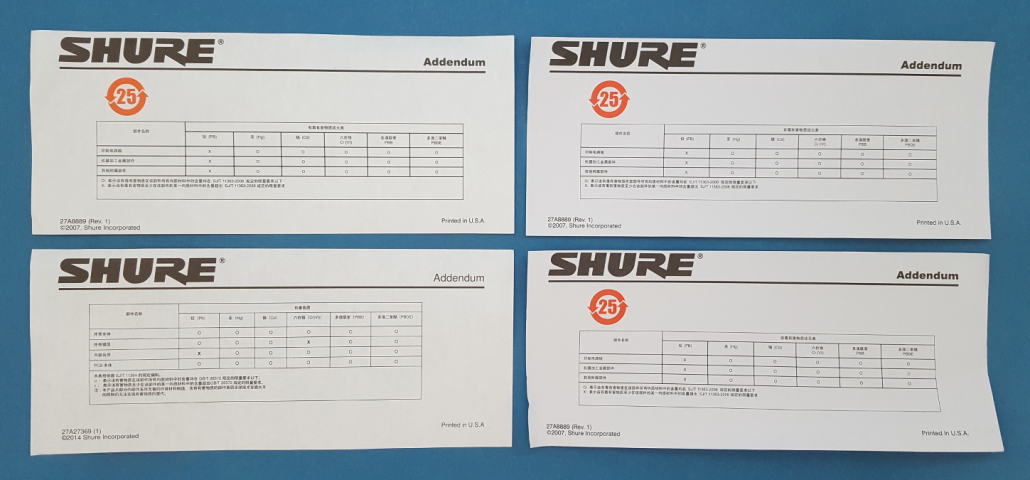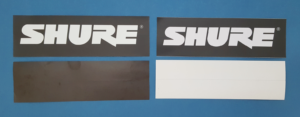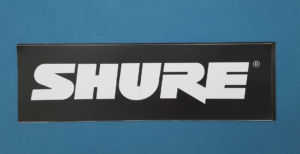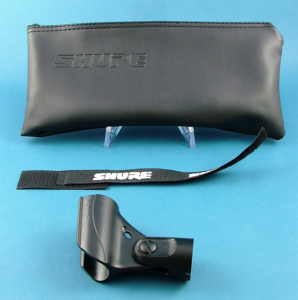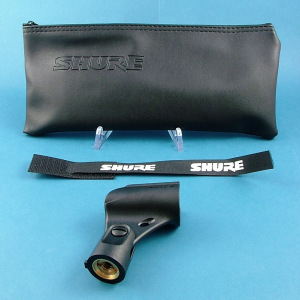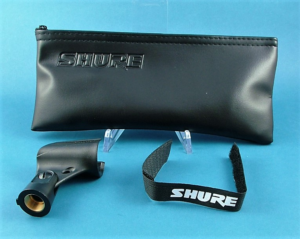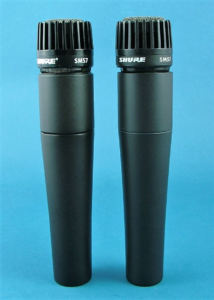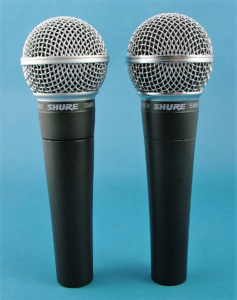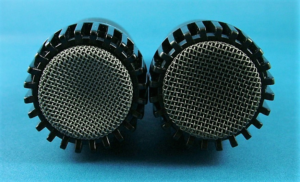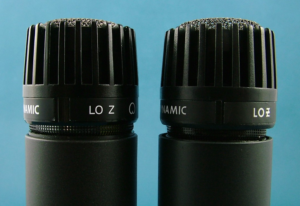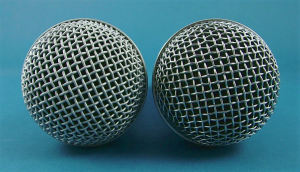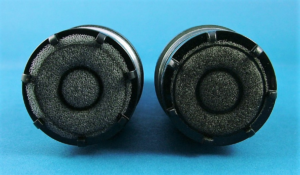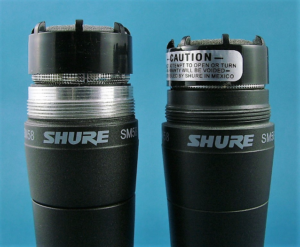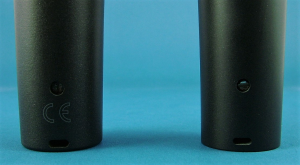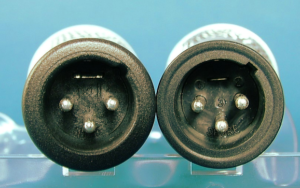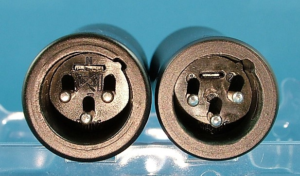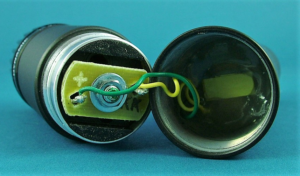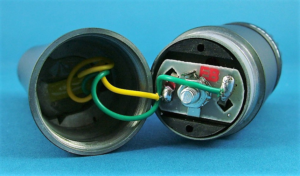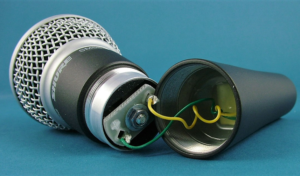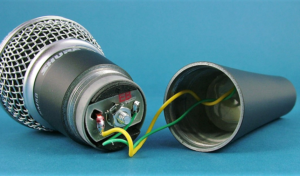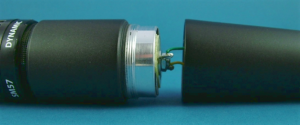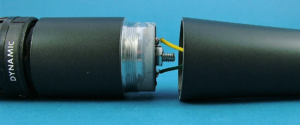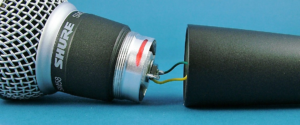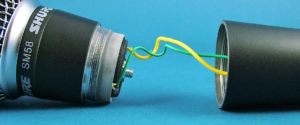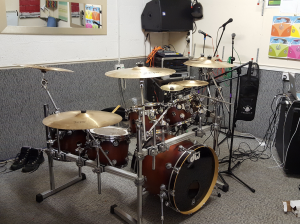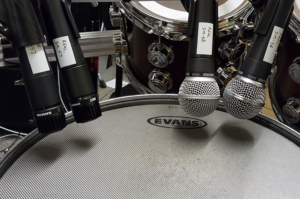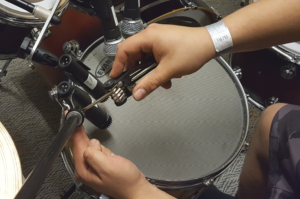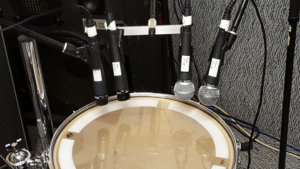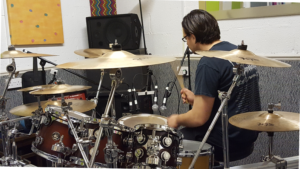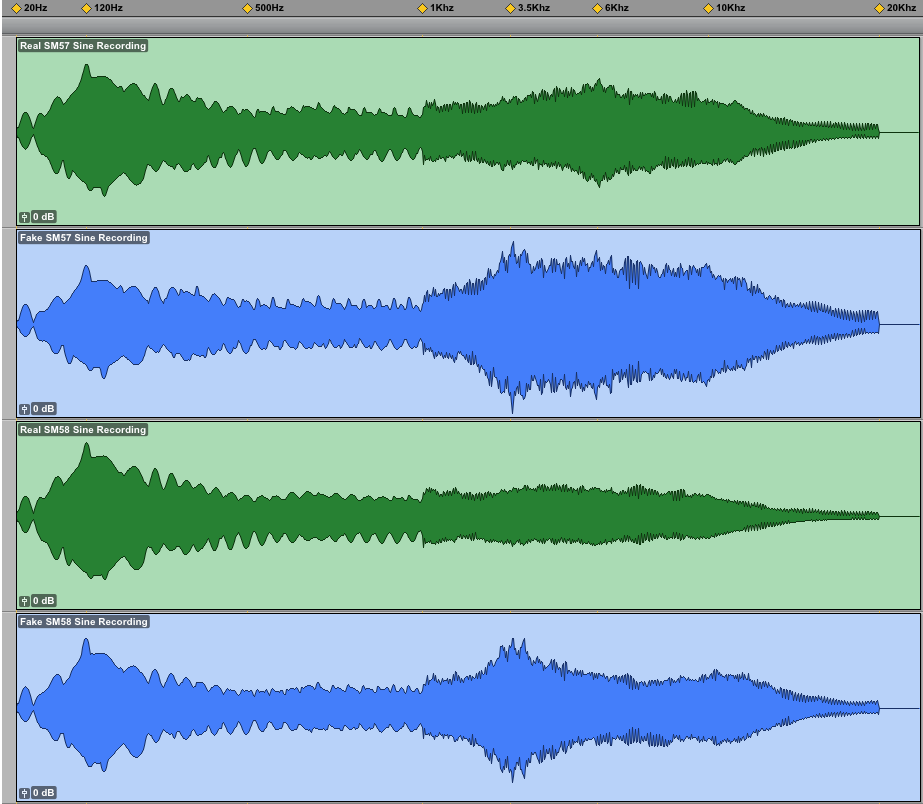Are You Sure it’s a Shure?
by Guy Joyner
Overview
As two of the most popular mics in existence, the Shure SM57 and SM58 have pretty much dominated the affordable microphone market since their introduction in the mid 60s, becoming synonymous with ruggedness and reliability. But lifelong popularity has proven to be a double-edged sword for the dynamic duo, and in recent years counterfeiters have flooded the market with untold numbers of inferior knockoffs, hoping to fool the unwary buyer into parting with their cash. In this instance, imitation is certainly not the sincerest form of flattery…
Whilst the counterfeiters have ‘traditionally’ put a lot of time and effort into ensuring that their fake microphones look the part (on first glance at least), the same cannot be said for the interior workings and resultant sound quality, which can range from plain shoddy to nigh on unusable.
Unfortunately for the buyer, by the time they have gotten around to actually recording with the counterfeit mics and subsequently realised they have been duped, it could be too late to secure a refund from the source; most dodgy suppliers know that they only have a limited window of opportunity in which to offload their wares and run with the money. Sure, if you paid with a credit card you’ll likely be able to get your money back eventually, but think of all the time that you’ve wasted; time that could have been spent getting killer recordings if only you’d bought a genuine Shure mic in the first place.
I recently found myself in such a position, having received a supposedly new SM57 and SM58, which subsequently turned out to be counterfeits. However, instead of just being angry about it, I decided that I would instead take advantage of the situation and compile an article that could be used as a checklist by other people to quickly and effectively verify if their SM57 and SM58 microphones are genuine.
I am aware that this subject has been written about before but, much like the articles themselves, the variety of knockoffs and their resulting discrepancies are numerous. Therefore the information in this article will serve to show not only the specific anomalous areas of the counterfeit mics that I bought, but also some general things to look out for if you are uncertain as to whether your mics are genuine.
Weight
A good starting point when checking to see if your microphone is genuine or not is to weigh it. The Shure website lists the SM57 as weighing 284g and the SM58 as weighing 298g, whilst the counterfeit versions typically weigh much less.
- Real SM57
- Fake SM57
- Real SM58
- Fake SM58
As you can see from the above images, my genuine SM57 weighed 280.4g and the SM58 weighed 329.5g; after doing a little research online it does seem to be a trend that SM58s actually weigh between 320g and 330g, despite the official listed weight of 298g. The fake SM57 weighed 235.8g and the fake SM58 weighed 237.0g. I also weighed the removable grilles from the real and fake SM58s, with the fake version weighing in at 8.1g less than the genuine one:
- Real SM58 grille
- Fake SM58 grille
Whilst I can accept a deviation of 3.6g from the weight of my real SM57 to the official stated weight, the weight deviation of the fake versions was significant, with the fake SM57 weighing 48.2g less than it should and the fake SM58 weighing 61.0g less than the official stated weight, and a whopping 92.5g less than my genuine model!
The SM57 and SM58 have a reputation for being extremely durable in large part due to the good quality metal used in the construction, which allows them to survive taking a knock or two. The cheaper materials used to construct the counterfeit models obviously account for the big difference in weight and would likely mean they would be much less resistant to punishment than the real thing. Had I not been set on sending them back for a refund, this might have made for an amusing test.
Box and Paperwork
One thing the counterfeiters really go to town on is the packaging for their fake mics, replicating not just the box but all of the accompanying paperwork. But, just as with the cheap materials used to build the fake microphones themselves, corners have also been cut here, providing a number of telltale signs to look for.
- Real SM57 box
- Fake SM57 box
- Real SM58 box
- Fake SM58 box
Box Serial Number:
- Real SM57 box (top) and fake SM57 box (bottom)
- Real SM58 box (top) and fake SM58 box (bottom)
The boxes might look good at first glance, but an absolute dead giveaway is whether or not there is a serial number present. Quite simply, if there isn’t one, the mic is likely a fake. As you can see from the above images, the real SM57 and SM58 boxes have an additional barcode at the top of the end panel, under which sits the serial number (S/N); the counterfeit boxes have no serial numbers.
Also look carefully at the text on the silver label of the fake SM57 box, where not only does it list it as being a “vocal” microphone (despite it clearly stating it’s an “instrument” mic on top of the box), but it also states that it has an on/off switch; there are NO versions of the SM57 with an on/off switch.
Box Text and Formatting:
You would imagine that when printing the boxes, the counterfeiters would simply scan an original and reproduce it; but luckily for us this doesn’t seem to be the case. Throughout the following pictures, observe the overall poorer print quality of the fakes compared to the genuine boxes.
On the top of the fake SM57 box (bottom image), the ‘g’ in the word “Legendary” is unusually large compared to the rest of the text. Also, take note of how on the genuine box you can still see elements of the background image (eg the cables) behind the text, whereas on the fake box this has all been painted out with black, likely so that the replacement text could be added in place of the original (this is also present on the fake SM58 box):
On the underside of the Fake SM57 box within the grey area that details the “Items included”, the microphone is listed as a “Sm57” (lowercase ‘m’), whereas on the genuine box it is listed as a “SM57”:
On the fake SM57 box in the French language section, the word “très” is written as “trés”, with an acute accent on the ‘e’ instead of a grave. Similarly on the fake SM58 box in the German language section, the word “für” is missing half of the umlaut (¨) on the ‘ü’. Also note how the flag icons on both fake boxes have weirdly offset white borders around them, likely due to a printing error:
- Real SM57 box (top) and fake SM57 box (bottom)
- Real SM58 box (top) and fake SM58 box (bottom)
On both of the fake boxes the text spacing of the Shure website URL and copyright information is weirdly formatted, with unnecessary gaps before and after the dots and inbetween the words “Shure” and “incorporated”:
- Real SM57 box (top) and fake SM57 box (bottom)
- Real SM58 box (top) and fake SM58 box (bottom)
Paperwork:
Again, at first glance it’s easy to see how people could be deceived into thinking that a counterfeit mic is real when they are presented with the abundance of paperwork that comes in the box; but take a closer look and it soon becomes apparent, as the poor printing quality of the counterfeit documents do not hold up under scrutiny:
- Real SM57
- Fake SM57
- Real SM58
- Fake SM58
Safety Precautions Documents
The safety precautions documents were taken from the real SM58 and fake SM57 respectively. Note how on the real document, the triangular caution symbol appears as a neat grey watermark behind the text, whereas on the fake document it appears as an inconsistent mess, clearly as a result of the original document just having been scanned and reprinted cheaply:
Addendum Documents
The Addendum documents look nearly identical, aside from the fact that the Shure logo in the top left has been cropped awkwardly close to the upper edge of the paper on the fakes:
Shure Stickers
On the genuine Shure stickers the paper on the underside is black, whereas on the fakes it is white and can also be seen as a thin white border on the front of the sticker. The fake stickers are also slightly smaller in size, measuring 207mm by 62mm, whereas the genuine stickers measure 210mm by 64mm:
- Real stickers (left) and fake stickers (right)
- Fake sticker laid on top of real sticker
Document Counts and Dates
I find it strange that the genuine SM57 comes with 5 documents, whereas the genuine SM58 comes with only 3, which is repeated for the fake versions but the other way around – the fake SM57 including only 3 documents and the fake SM58 including 5. I purchased both of the genuine mics from reputable dealers but at different times (the SM57 in 2012 and the SM58 in 2017), so I can only assume that the relatively sparse paperwork in the newer SM58 is due to a packaging update.
On a related note, the table below collates the copyright dates on all of the boxes and documents, but I will admit that I wasn’t able to glean anything from this information as there is quite a spread of dates for each box, with the exception of the fake SM58. In the event that someone out there is able to shed any light on the significance of the dates, I will happily update this article and credit you for the information supplied.
| Genuine SM57 | Fake SM57 | Genuine SM58 | Fake SM58 | |
|---|---|---|---|---|
| Box | 2008 | 2008 | 2008 | 2008 |
| User Guide | 2010 | 2009 | 2015 | 2008 |
| Registration Card | 2008 | n/a | n/a | 2008 |
| Addendum | 2007 | 2007 | 2014 | 2007 |
| Limited Warranty | 2011 | 2006 | 2013 | 2006 |
| Safety Precautions Doc | 2008 | 2014 | 2014 | 2008 |
| Safety Precautions Card | 2008 | n/a | n/a | 2008 |
Microphone and Accessories
As with the boxes and paperwork, the microphones can initially look pretty convincing, especially if you’ve never seen a real one before; they’re the right size and shape, but they just don’t have the build quality that genuine Shure mics have, and the accessories don’t fare any better.
Bag, Tag and Clip
Both the genuine and fake mic bags are made from artificial leather, but in terms of quality they are leagues apart. The genuine Shure bags have a subtle matte finish, neatly embossed logo and tidy stitching, whereas the fake ones have a tacky shiny finish, garishly pitted logo and wide, crude stitching.
The counterfeit velcro tags are the correct length in comparison to the genuine ones but the white Shure branding is too close together and they will not lie flat, perhaps indicating that they are made from a less flexible, poorer quality material.
With the mic clips, I’ll admit I was hard pushed to find a visual difference between real and fake as they are both essentially black moulded plastic with gold-coloured metal threading at the base. One key difference however is that the genuine mics come supplied with 5/8″ to 3/8″ thread adapters (underside of the SM58 mic clip in the photo), and the counterfeit ones do not.
- Real SM57 bag and clip
- Fake SM57 bag and clip
- Real SM58 bag and clip
- Fake SM58 bag and clip
The Microphones
Microphone Body
The main body of both the SM57 and SM58 comprises two metal tubes that screw together. On the genuine microphones you can see that the divide between the two halves is more clearly defined due to each end curving in slightly around the lip, but on the fake versions the two sections sit together in a more flush manner.
- Real SM57 (left) and fake SM57 (right)
- Real SM58 (left) and fake SM58 (right)
SM57 Capsule
Observe the black, circular-patterned mesh around the base of the SM57 capsule housing; on the genuine model the holes are larger, revealing part of the silver capsule underneath and the mesh is neatly arranged, whereas on the fake model the holes are small and the mesh is crooked.
The mesh grilles on the tops of the microphones are notably different too, with the fake version protruding further from the top of the plastic housing and sporting thinner strands of mesh that are dark silver in colour, as opposed the the thicker brushed metal effect seen on the genuine mic.
On the fake version, the printed text on the band circumventing the base of the plastic capsule is not only less defined than on the real SM57, but it also uses ‘Ƶ’ instead of the standard “Z” to denote impedance.
Also of note is how on a real SM57 the plastic capsule housing is free to rotate, whereas on this fake version it is seemingly stuck in place.
- Real SM57 (left) and fake SM57 (right)
- Real SM57 (left) and fake SM57 (right)
SM58 Grille
The spherical grille on the top of the fake SM58 seems to be made from the same cheap, thinner mesh as on the fake SM57, giving it an overall shinier, tacky look when compared to the sturdy-looking brushed metal of the genuine article.
SM58 Capsule
Removing the mesh grille from the top of the SM58 exposes the capsule, which is where the difference between the genuine and fake mics becomes incredibly apparent. The genuine SM58 capsule is larger in terms of height (approximately 4mm), and better constructed in every way. Looking at the top of the capsules you can see that on the fake model the plastic housing is thicker and rougher in texture (especially on the ‘prongs’ around the top) and that the foam insert is darker in colour.
The fake capsule also has a silver caution sticker affixed to it, which is commonly understood to be something that has only ever appeared on the counterfeit versions, begging the question of why the bootleggers ever went to the effort of putting it on there in the first place?
- Real SM58 (left) and fake SM58 (right)
- Real SM58 (left) and fake SM58 (right)
SM58 Foot
At the foot of the genuine SM58 body there is a CE (European Conformity) mark, which is absent from the foot of the fake version. My genuine SM57 does not have a CE mark, possibly due to it being an older model that was not produced specifically for the European market, but it is still something to keep a look out for.
Connecting Pins
I will apologise at this point for the quality (or lack thereof) of the photos below, where I used two different lighting methods in an attempt to capture the detailing around the XLR pins underneath the microphones – hopefully you can still get an idea of what I was trying to highlight.
The main difference here is that the two genuine mics display the universal “do not dispose of” symbol just above pins 1 and 2, which is absent on the counterfeit versions. The fake SM58 also has a larger recess within the inner perimeter of the underside of the casing.
- Real SM58 (left) and fake SM58 (right)
- Real SM57 (left) and fake SM57 (right)
Internal Wiring
I had read before that a common sign that a SM57 or SM58 is fake is if it has no printed code on the internal board that the wiring connects to, but in this instance this has proven untrue as the only mic out of the four to lack a code is the genuine SM58. In fact on first glance the internal wiring of the fake mics look pretty convincing, with both using the standard colour green and yellow wires; but just as with the boxes and paperwork, the cracks begin to show on closer inspection.
A quick look in the user manuals shows that the green wire should connect to the positive(+) terminal and the yellow to the negative(-), which can clearly be seen on the genuine mics. On the counterfeit versions the wires are connected the other way around, although it was initially hard to tell with the fake SM57 due to the fact that the ‘+’ and ‘-‘ symbols are largely obscured by big blobs of solder!
On the genuine models the rubberised inserts on either side of the wiring board can be moved away from the sides of the metal tube but will instantly return to their original position when released, whereas on the fake models they are barely attached to the interior of the mic at all.
Also of note is the poor quality paintwork on the fake SM58, which fails to cover either end of the exposed metal body.
- Real SM57
- Fake SM57
- Real SM58
- Fake SM58
Internal Threading
The final visual differences between the two sets of mics can be seen around the section of threading that connects both halves of the main body together. On the genuine models the section of metal threading is nice and clean looking, but on the fakes the area below the threading looks very dull and possibly even corroded. You will also notice how the lengths of wire in the fake SM58 are much longer than in the real thing.
- Real SM57
- Fake SM57
- Real SM58
- Fake SM58
The Sound
OK, so no matter how unlikely, there’s always the possibility that the knockoff mic that you’ve bought could fly through the above visual checks due to it being an absolutely stellar reproduction. But there is still one surfire way to tell if it’s genuine or not; does it sound like a Shure mic?
In order to find out I hired one of the practice rooms at Shockerwick Studios in Bath and enlisted the help of my good friend Les, from the band Embodiment, who was kind enough to let us record a number of samples from his drum kit. I chose to use a Universal Audio Apollo for the recordings as the built in preamps are nice and clean sounding.
Microphone Sensitivity
As an initial test I wanted to gauge the sensitivity of each microphone, as I had read that it is common for the knockoff 57s and 58s to need a significantly higher gain boost than the genuine versions when level matching. So I set the microphones up and performed a simple headphone listening test, increasing the preamp gain on each mic individually until the ‘background noise’ became audible; it helped that the room in which we were recording had decent sound insulation, so I didn’t need to worry about noise pollution from outside of the building.
Surprisingly, the knockoff mics turned out to be more sensitive than the real ones, with the fake 57 and 58 requiring 35dB and 34dB of gain respectively, in comparison to the uniform 40dB of gain from the genuine articles. I’m not suggesting that this is a plus point for the knockoff mics, just that it was unexpected.
For the key part of the sound test we recorded samples from a snare drum and a floor tom, starting out with a series of spaced individual hits with a segmented increase in velocity, followed by a good old drum roll. Whilst I’m aware that SM57s are usually favoured over SM58s for recording snares and that neither the SM57 or SM58 is what you would call a ‘typical’ choice for recording a floor tom, I wanted to record sound sources that would provide variation in both transient and tone in short bursts, therefore allowing for quick comparison and assessment of each microphone’s character.
The SM57 and SM58 are based on the same cartridge design, so ‘traditionally’ if you were to use a SM58 as a drum mic you would remove the ball grille from the capsule, as the grille has a subtle effect on the frequency response of the microphone and removing it brings the sound closer to that of the SM57; but in this situation I wanted to use the mics “as is”, in order to record with them in their standard configuration.
Snare Recordings
- From left to right: fake SM57, real SM57, real SM58 & fake SM58
- Les tightening the mic clip of the fake SM57
The mics were arranged in pairs, real SM57 next to fake SM57 and real SM58 next to fake SM58, with the grille of each mic angled above the snare, approximately 1.5 inches from the skin. You may remember how I mentioned earlier in the article that there was very little difference between the genuine and fake mic clips… well, I was wrong about that. The fake SM57 clip proved to be a nightmare to use, with the microphone refusing to remain at the required angle due to the pivot joint being incredibly loose; in the end we had to tighten the screws to the point where they refused to turn any further in order to get it to hold in place.
Individual Hits
For the samples below, we recorded 12 individual snare hits, with an increase in velocity every four hits. The samples recorded by the real SM57 have a solid, balanced sound, with an appropriate snappiness and plenty of body from the low-mids; the real SM58 sounds very close, only really lacking some of the higher-mids, which is likely due to the presence of the ball grille and variation in position of the mic relative to the snare.
In comparison the fake SM57 sounds overly bright and tinny, with very little body behind it and it seems to exaggerate the ring of the snare. Next to the real SM58 the fake version sounds more harsh in the high-mids, whilst also having a slightly ‘boxy’ quality, and the overall tone sounds increasingly thinner as the velocity of the snare hit builds.
Snare Rolls
For the following samples we recorded a simple snare roll that builds up to a crescendo before being allowed to ring out. The preamp gain on each mic was re-calibrated in order to accommodate for the required increase in dynamic range; I found that the signals from both counterfeit mics would clip inconsistently during the crescendo of the snare roll and so their gain structures had to be lowered slightly more than those of the genuine mics.
The increased density of sound in these recordings further brings out the discrepancies between the two sets of mics. The tinniness of the fake SM57 over-emphasises the transients of the hits, which makes it sound harsh without the lower-mids to back it up, and the fake SM58 manages to somehow sound both harsh and slightly muffled, with some audible distortion creeping in during the crescendo.
Floor Tom Recordings
- From left to right: fake SM57, real SM57, real SM58 & fake SM58
- Les performing a roll on the floor tom
To record the floor tom, the mics were arranged in a similar fashion to the snare but positioned slightly higher, at around 2 inches from the skin. The individual preamp gains were then adjusted accordingly.
Individual Hits
For the next set of samples we recorded 16 individual floor tom hits, again increasing the velocity with every four hits.
The real SM57 and SM58 did a decent job of capturing the booming lower-end of the tom, without it becoming overpowering, and also picked up an appropriate level of snap to add definition to the transients. I do feel that the SM58 sounds slightly better than the SM57 here, which is possibly due to it’s position in relation to the skin of the tom.
The recording from the fake SM57 lacks both the low-end thump and the boom that typically characterises a floor tom, once again sounding overly thin and lacking impact as a result. It also exaggerates the ring of the drum once again, creating a sound reminiscent of a bouncing beach ball during the last four tom hits. The fake SM58 fares similarly badly, lacking both body and lower-end definition whilst also sounding boxy and more distant during the lower velocity sections. It also produces a beachball-like tone during the last eight hits.
Floor Tom Rolls
For the final samples we recorded drum roll with the floor tom. Each preamp was re-calibrated to accommodate the additional dynamic range that the recordings would require and during the warmups I encountered the same inconsistent clipping issues with the counterfeit mics, requiring additional attenuation to the gain of their preamps.
As with the recordings of the individual tom hits, both genuine mics provided a solid, balanced sound with plenty of lower-end punch and higher-end definition.
The tinniness and lack of low-end depth in the recording from the fake SM57 almost makes it sound like it has been captured from a different, smaller floor tom, and the over pronounced high-mids give the ring on the final hit an unpleasant metallic sound. The recording from the fake SM58 attributes a strange, almost nasal tone to the recording, making it sound almost as if the tom had been skinned with a sheet of paper.
Frequency Response Test
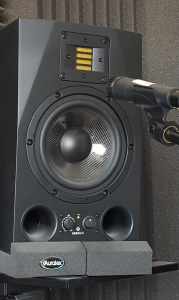 In an attempt to shed a little more light on the tonal differences between the genuine and counterfeit microphones I set up a simple test to help map out a visual representation of their individual frequency responses.
In an attempt to shed a little more light on the tonal differences between the genuine and counterfeit microphones I set up a simple test to help map out a visual representation of their individual frequency responses.
I used the signal generator plugin in Pro Tools to output a sine wave tone, which was automated to cycle up from 20Hz to 20kHz over a 40 second period. I set up a mic stand in front of one of my monitors that would hold a microphone in position approximately four inches from the face, equidistant from the upper edge of the sub cone and the bottom edge of the ribbon tweeter. Working with each microphone separately I initially calibrated the input gain of the preamp using another 1kHz test tone and then proceeded to record the 40 second cycle from the tone generator.
I’ll freely admit that the test was a little crude, but it did provide an interesting visual representation of the frequency response of each mic, which can be seen below. I decided not to include the actual audio recordings of the test in this article because, quite simply, they do not make for a particularly pleasant listening experience.
The image below is a screen capture directly from Pro Tools, with the green waveforms representing the genuine SM57 and SM58, and the blue ones representing the counterfeit models. You’ll note I have not added any actual decibel level values in the image as the test was not comprehensive enough to warrant it and was only intended to provide an approximate visual comparison. The yellow diamond-shaped markers at the top do however highlight some of the key frequency areas, in order to provide a little clarity:
It’s worth adding at this point that the signal generator did produce some audible artefacts, particularly as it was moving up through the lower frequencies (possibly due to it transitioning before the frequency could finish it’s cycle), which could account for the initial sound spike at the start. The reason I mention this is because the official frequency response ranges for the SM57 and SM58 start at 40Hz and 50Hz respectively, and the official frequency response of the Adam A7X monitor that I used starts at 42Hz.
In general you will see that the genuine SM57 and SM58 have a very similar frequency response up until about 1.5kHz, with the SM57 subsequently having an increased sensitivity up until about 10kHz. The lower sensitivity of the SM58 could be attributed in part to the presence of the ball grille over the capsule and a possible slight variation in the way the mic was positioned. What is good to see is that despite the relative simplicity of the test, to a certain extent, the above image highlights many of the peaks and troughs displayed on the official frequency response graphs for the SM57 and SM58 on the Shure website.
Casting even a cursory glance over the frequency response waveforms of the fake SM57 and SM58 highlights just how different they are to the real thing. The fake SM57 lacks the lower-end responsiveness of the real model and has a big sensitivity spike at around 3.5kHz, both of which account for the thin, slightly harsh tone of the recordings. The waveform for the fake SM58 seems similar to that of the real version in the lower frequencies, slightly less responsive in the low mids and then generally unbalanced after a large spike at 3.5kHz, explaining the lack of body and harsh tone present in the recorded samples.
Conclusion
The Shure SM57 and SM58 are great mics, rightly earning their reputation over decades of service, but it is a real shame that in this day and age people continue to fall victim to counterfeiters. So as some final advice for any potential SM57 and SM58 buyers the following condensed checklist will hopefully steer you clear of any dodgy sellers:
- Try and only buy new SM57s and SM58s from established retailers; they have a reputation to uphold and will therefore not stock counterfeit goods.
- Look at the price. On average in the UK, new SM57s and 58s retail for between £85 to £95; if the price is lower than this and it is not being sold by an established retailer, tread carefully.
- If you are buying a second hand SM57 or 58 online, before you part with your cash ask the seller to provide you with the following:
⁃ A photo of the mic on a set of digital scales, clearly showing the weight.
⁃ A photo of the text around the XLR pins on the underside of the mic.
⁃ A photo of the capsule housing with the ball grille removed, if the mic is an SM58
⁃ A photo of the silver label end of the box to check the listed contents and if it has a serial number.
⁃ A detailed photo of the pouch that the mic comes in.
⁃ A photo of the back of the Shure sticker from the box to see if the removable paper is black.
Overall I hope that you have enjoyed reading this article and that it has proven useful to you.


